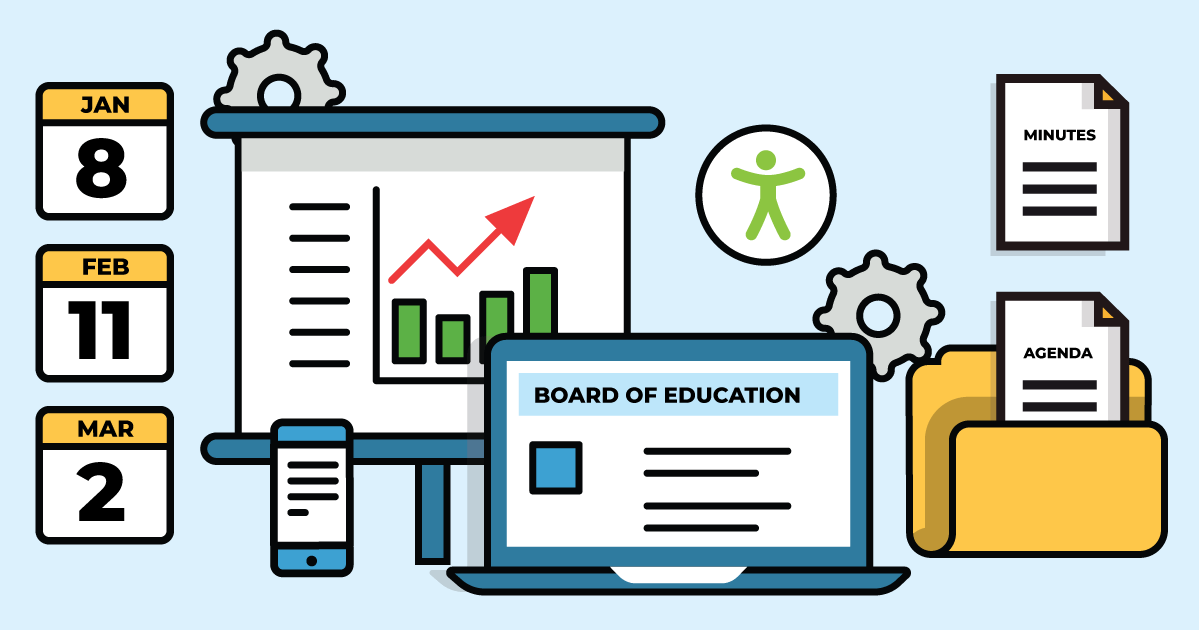“Share content and create meaningful dialogue with parents, students, staff and the community to improve communications and support the educational goals of the school.”
School Social Media Guide
Explore the chapters:
Social media for schools is more than the occasional post to the district Facebook page. In order to realize its potential to engage your school community, your school's social media activity should be viewed in context with your entire school-home communications strategy. It may require a shift in thinking for some, but social media is a potentially powerful parent engagement tool for your district.
As with any communications plan, you have to have the people in place to manage it, have your target audiences well defined, and map out the kinds of content you’ll be creating. You have to select the right networks and plan a schedule for sharing your content. You also need to begin promoting your social media activity, and have in place a process for interacting when it all starts getting ‘social.’
Putting in place a process will help you manage the content and measure the results of your school’s social media program.
When a web visitor is on your website, that’s your golden opportunity to promote your school’s social media. They’ve found your way to your web communications hub, now take advantage of their visit and make it virtually impossible for them not to follow you. Place follow buttons easily within reach and at every turn as they navigate your website.
In addition to building a following through follow buttons, sharing is your best route to getting more followers, so make sure you place share links throughout your website. These are especially important on all your news and blog pages. Make sure you use the appropriate share links only to those social media channels you’re managing.

“Share content and create meaningful dialogue with parents, students, staff and the community to improve communications and support the educational goals of the school.”
Social media is the best way to keep up with people on the go, and who isn't on the move these days? People prefer to get and share news, information, and entertainment via smartphones and tablets, so your school’s got to join in the mix.
It’s a breeze to reach your audiences via mobile devices. With everyone leaning heavily on their phones and tablets, make sure your social media is set up to respond to the growing number of mobile users and that it integrates with your website.
Many school communications plans ironically neglect – if not totally overlook – the role students can play in delivering messaging. They are all about sharing. Be sure to factor them into your communications mix. Find some student ambassadors who can haul the load when it comes to sharing your school stories.
Reaching your entire school community in today’s digital, mobile world requires a mindset, strategic approach and the tools to connect how and when your audiences prefer.
The great advantage of having all this content moving through social media platforms is the ability and ease of seeing what’s working and what’s not working. You can monitor and analyze the reach and engagement that occurs and expand your online presence.
Reach is the number of unique visitors to your page or post, and engagement is the number of people who’ve shared , liked or commented on your posts.
Viral reach is the number of unique people who saw this post from a story published by a friend.
Post Reach is the number of unique people who have seen any content associated with your page.
Organic reach is those who've seen your post through unpaid distribution.
Paid reach, which can be quite affordable, is those who you've reached through paid posts.
Engagement is the number of unique people who have clicked on, liked, commented on or shared your posts.
Regularly review analytics provided by Facebook and Twitter accounts, and keep a document with all of your posts that drive high results, and follow the same success. Also, see the best-performing kinds of Facebook posts, according to school social media expert Andrea Gribble.

Social media can surround your audiences with messaging and create opportunities to start one-on-one and one-to-many dialogue.
Be prepared by having a sound interactive process in place to keep the dialogue going. Parent engagement can spread quickly, and you don't want to be asleep at the switch and miss replying to posts and comments. Once the dialogue starts, it’s best to have a plan to both promote the good stuff and handle the not-so good stuff.
Foremost, you need to monitor your channels and be responsive. While you most certainly want to empower many staff content contributors, it's best to have just one individual ultimately responsible for keeping the social dialogue going. This can be accomplished when setting up your structure and granting permissions.
You can learn a great deal about your school community through social media.
Some parents or parent groups can be outspoken, and social media emboldens them to speak out, so it's doubly important to respond accordingly to negative comments.
Respond as soon as possible, but it’s especially important to address negative comments and discussion quickly and directly.

Create hashtags by grouped content and promote them on a scheduled basis. e.g. #mapledaledanceteam, #mapledalecrosscountry
Explore the chapters:
Contact SchoolNow
Get a personalized demo.
If you want to see SchoolNow in action or just want to learn more, let us know.

© 2023 SchoolNow. All Rights Reserved.